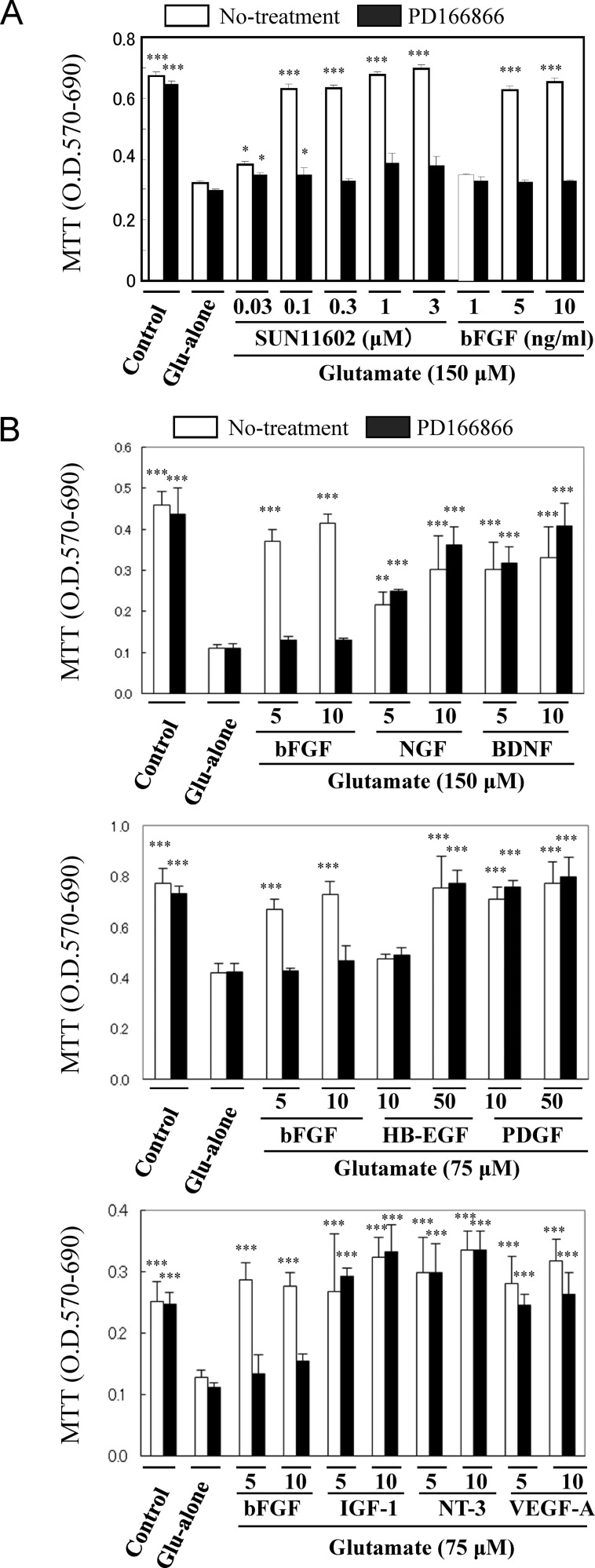Figure 3.
Different effects of PD166866 on the neuroprotective effects of SUN11602 and several growth factors against glutamate-induced toxicity in primary cultures of rat cerebrocortical neurons. (A) Neuroprotective effects of SUN11602 and bFGF were abolished by pretreating the cultures with PD166866 (0.3 μM). This indicates that SUN11602 and bFGF activate their neuroprotective mechanisms through the phosphorylation of the FGF receptor-1 (FGFR-1), although it has not yet been demonstrated whether the receptor is directly phosphorylated by SUN11602. (B) Other growth factors (nerve growth factor [NGF], brain-derived neurotrophic factor [BDNF], insulin-like growth factor-1 [IGF-1], neurotrophin-3 [NT-3], vascular endothelial growth factor-A [VEGF-A], heparin binding-EGF [HB-EGF], and platelet-derived growth factor [PDGF]) were investigated in order to discriminate the important factors in the intracellular signaling of SUN11602 and bFGF. Unlike bFGF, the bioactive effects of the other growth factors were not affected by PD166866. The neuroprotective mechanisms of SUN11602 and bFGF appear to differ from those of the other growth factors. The toxic concentrations of glutamate in the figures (150 or 75 μM) were employed compared to those that were suitable for the growth factors in order to show their neuroprotective effects clearly. *p < 0.05 and ***p < 0.001 compared to glutamate alone (means ± SEM, n = 6, Dunnett’s multiple comparison test).

